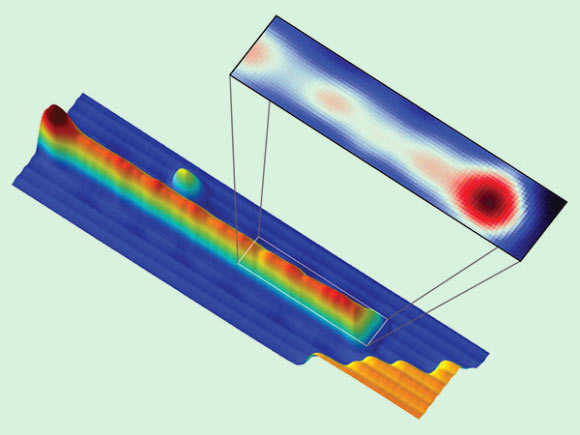
First predicted by Ettore Majorana, a brilliant Italian theoretical physicist who had a brief career in the 1920-30s but vanished mysteriously at the age of 32, Majorana fermion is an enigmatic particle that may exist on the boundary of matter and antimatter.
Curiously, it is thought to be both a material particle and its own corresponding antiparticle.
When matter and antimatter collide, they typically disappear in a burst of energy – not so with the Majorana fermion, thought to be stable and robust.
By virtue of these attributes, the particle may be instrumental in solving other mysteries, perhaps even redefining the nature of the Universe.
Some scientists suggest that Majorana fermions make up the mysterious ‘dark matter’ thought to form more than 70 % of the Universe.
Despite broad scientific interest, there was little progress in finding the particle until 2001 when Prof Alexei Kitaev of the University of California predicted that a Majorana fermion would appear at each end of a superconducting wire.
In 2012, Dutch physicists reported evidence for the electrical signal characteristic of a neutral Majorana in indium antimonide nanowires contacted with one normal (gold) and one superconducting (niobium titanium nitride) electrode. Some researchers, however, have argued that other phenomena could produce the same signal.
In 2013, Prof Ali Yazdani and Prof Andrei Bernevig, both from Princeton University, teamed up to try to find more definitive observation of Majorana fermions by capturing an image of them.

Princeton University experiment revealed the atomic structure of the iron wire on a lead surface; the zoomed-in portion depicts the probability of the wire containing the Majorana fermion.
Image credit: Ali Yazdani Lab.They proposed a novel approach for how the Majorana particle could occur in materials that combine magnetism and superconductivity, and that such a particle could be directly observed using a device called a scanning-tunneling microscope.
“This is the most direct way of looking for the Majorana fermion since it is expected to emerge at the edge of certain materials. If you want to find this particle within a material you have to use such a microscope, which allows you to see where it actually is,” explained Prof Yazdani, who is the senior author of a paper published in the journal Science.
The setup Prof Yazdani and his colleagues created starts with an ultrapure crystal of lead, whose atoms naturally line up in alternating rows that leave atomically thin ridges on the crystal’s surface.
They then deposited pure iron into one of these ridges to create a wire that is just one atom wide and about three atoms thick.
The scientists then placed the lead and the embedded iron wire under the scanning-tunneling microscope and cooled the system to minus 272 degrees Celsius, just a degree above absolute zero.
After months of painstaking work, they confirmed that superconductivity in the iron wire matched the conditions required for Majorana fermion to be created in their material.
Ultimately, the microscope was also able to detect an electrically neutral signal at the ends of the wires, similar to those seen in the Dutch experiment.
However, the setup also allowed the team to directly visualize how the signal changes along the wire, essentially mapping the quantum probability of finding the Majorana fermion along the wire and pinpointing that it appears at the ends of the wire.
“It shows that this signal lives only at the edge. That is the key signature,” Prof Yazdani concluded.